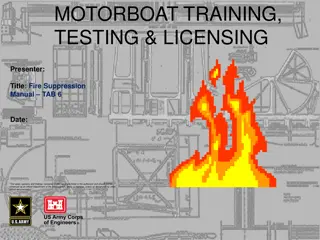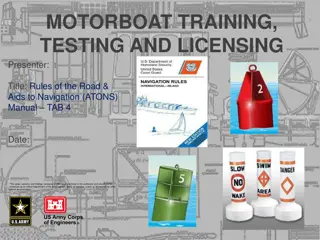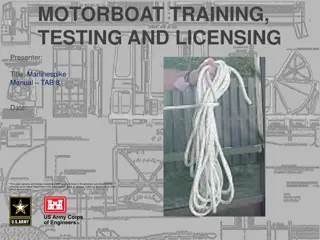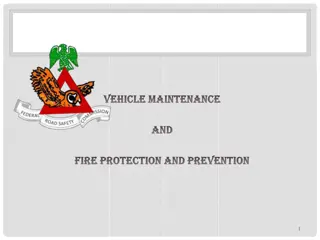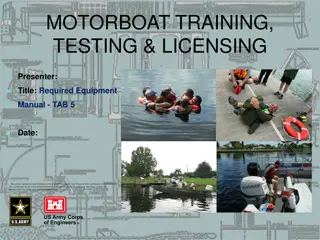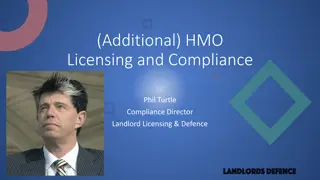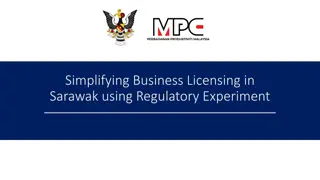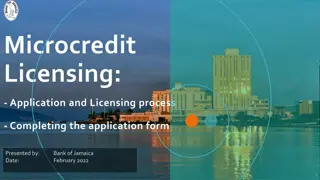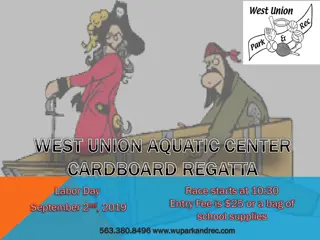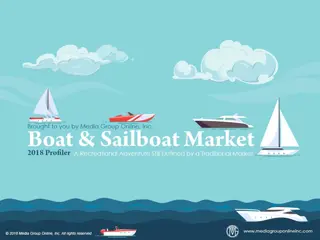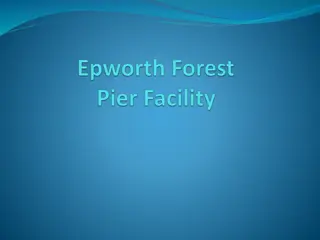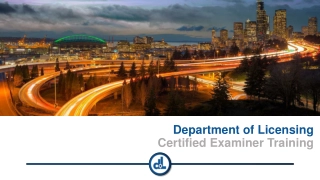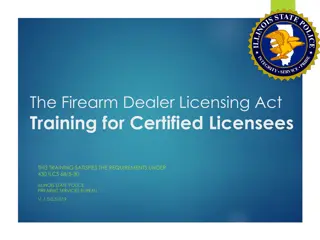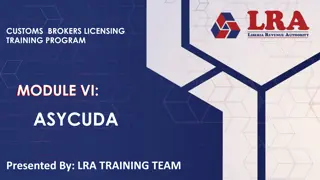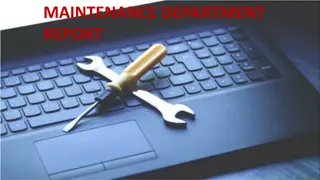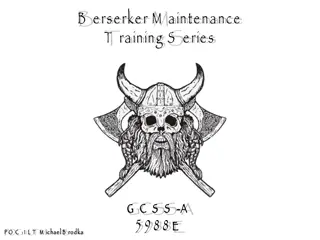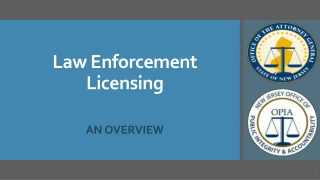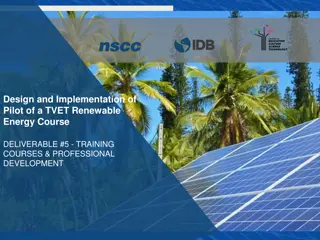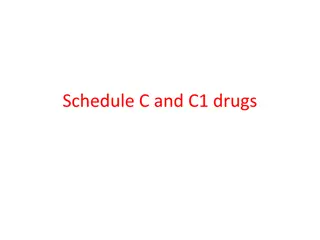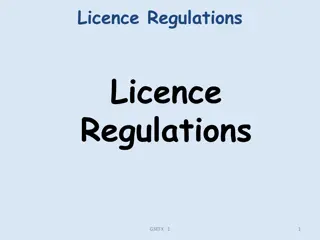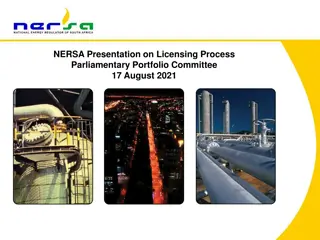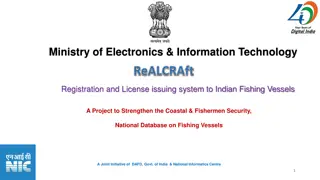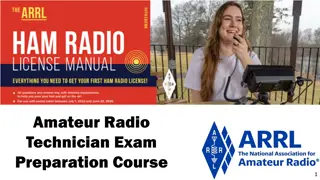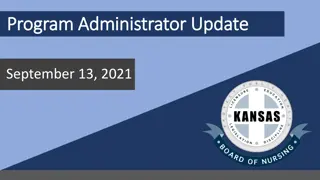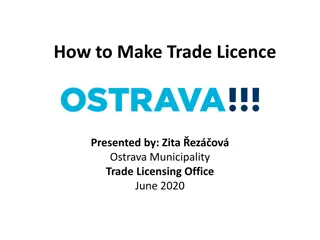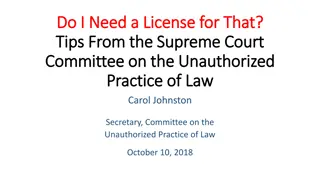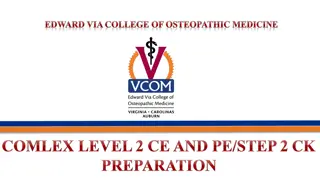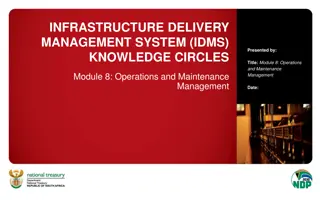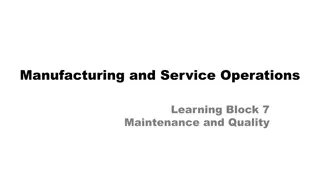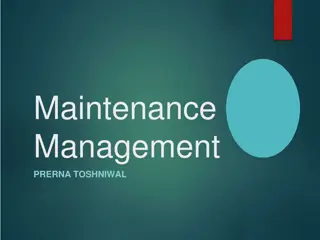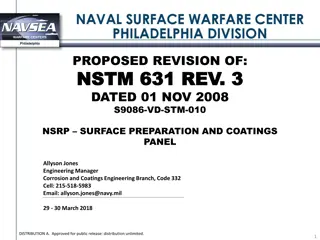Motorboat Training and Licensing: Boats/Personal Watercraft Maintenance Manual
This training and licensing presentation focuses on key aspects of motorboat operation and maintenance. It covers terminology, hull types, maintenance procedures, and common outboard motor issues. The content includes length classes, vessel equipment requirements, introduction to boats, and details about hull types such as round bottom, flat bottom, and V-hulls. The presentation aims to enhance understanding and knowledge for safe and efficient boating practices.
Download Presentation

Please find below an Image/Link to download the presentation.
The content on the website is provided AS IS for your information and personal use only. It may not be sold, licensed, or shared on other websites without obtaining consent from the author. Download presentation by click this link. If you encounter any issues during the download, it is possible that the publisher has removed the file from their server.
E N D
Presentation Transcript
MOTORBOAT TRAINING, TESTING AND LICENSING Presenter: Title: Boats/Personal Watercraft and Boat Maintenance Manual TAB 2 Date: The views, opinions and findings contained in this report are those of the authors(s) and should not be construed as an official Department of the Army position, policy or decision, unless so designated by other official documentation.
2 2 Boats and Boat Maintenance Objectives: Understand the proper terminology for a boat Understand hull types and their characteristics Understand the Capacity Plate List normal maintenance procedures for the boat and motor List common problems associated with outboard motors and typical troubleshooting procedures
3 3 Length Classes Class A - Less than 16 feet Class 1 - 16 feet to less than 26 feet Class 2 - 26 feet to less than 40 feet Class 3 - 40 feet to less than 65 feet
4 Length of a Vessel 4 Vessel s overall length determines the equipment required to comply with federal and state laws.
5 Introduction to Boats 5
6 Introduction to Boats 6
7 7 Personal Watercraft
8 8 Hull Types Round bottom boats almost Round bottom boats almost "glide" through the water. "glide" through the water. Because round Because round- -bottomed boats are very efficient at boats are very efficient at moving through water, most moving through water, most cruising sail and cruising sail and powerboats have rounded powerboats have rounded hulls. Typically, round hulls. Typically, round- - hulled boats move at slow hulled boats move at slow speeds. speeds. Flat bottom boats are typically small Flat bottom boats are typically small open boats such as johnboats. Flat open boats such as johnboats. Flat- - bottomed boats can easily get "on bottomed boats can easily get "on plane" or ride on top of the water at plane" or ride on top of the water at high speeds. Flat bottom do not high speeds. Flat bottom do not handle well in choppy or rough handle well in choppy or rough water, especially at water, especially at planing Flat Flat- -bottomed boats are not very bottomed boats are not very stable; caution should be used when stable; caution should be used when moving around them. moving around them. "V "V- -hulls" are designed to hulls" are designed to operate at high speeds and operate at high speeds and to "cut" through rough water. to "cut" through rough water. V V- -hulls are not as efficient as hulls are not as efficient as flat or round flat or round- -bottomed boats, bottomed boats, and need larger engines to and need larger engines to move at similar speeds. move at similar speeds. Cathedral or multi Cathedral or multi- -hulls, are two or more hulls attached together. or more hulls attached together. This combination of hulls allows This combination of hulls allows for much more stability than what for much more stability than what is found in other hull forms. The is found in other hull forms. The air pocket that is formed between air pocket that is formed between the hulls may also provide lift, the hulls may also provide lift, helping the boat get on plane helping the boat get on plane more easily and increasing more easily and increasing efficiency. efficiency. hulls, are two bottomed planing speeds. speeds.
9 Engine Types 9 Inboard Outboard Inboard/Outboard Jet Drive
10 Capacity Plate 10 * If no Capacity Plate use: length x width 15 to calculate the number of 150 lb. people the vessel can carry safely Federal law requires capacity plates on boats less than 20
11 11 Propeller Types Plastic used in low horsepower situations, blades tend to cup Aluminum good strength, corrosion resistant, can chip and bend Stainless Steel strong, expensive but strikes may transfer damage to other parts of engine
12 Diameter and Pitch 12 The number stamped on the prop refers to the prop s diameter and pitch. Example: 10x15 mean the prop has a 10-inch diameter and a 15-inch pitch. (typically marked on the prop tube or within the hub) a. Diameter is the distance across the circle described by the blade. As a rule, a slower turning, larger diameter propeller is more efficient than a faster turning, small diameter propeller. b. Pitch is a product of the propeller s diameter and the rake of its blades and is the distance in inches the prop should travel forward in one revolution.
13 Boat/Prop Match Up 13 Find the recommended wide-open throttle (WOT) rpm in the owner s manual Make test runs If WOT is too high, install larger pitch If WOT is too low, install smaller pitch
14 Routine Motor Maintenance 14 Lubricate fittings and drive parts Change lower unit lubricants and impeller every 100 hours or once per season Inspect spark plugs Check motor for loose connections, leaks, or loose parts Examine propeller
15 Trouble Shooting: Engine fails to start, loses power, or stops while under way. 15 Check gas Check fuel tank valves and fuel line connections Check battery connections Loose wire in the ignition circuit Fuel not reaching cylinders Overheated engine (check tell-tale for water stream) Fouled spark plug Carburetor needs adjustment Improper oil/fuel mixture Kill switch disengaged
16 Trouble Shooting: Engine seems to run well but lacks power while under way Improper mounting Incorrect tilt angle or improper load distribution Fouled propeller or lower unit Damaged prop blades or bushing assembly Engine knock loose prop, loose flywheel nut, worn pistons Excessive water in bilge check for leak/drain plugs 16
17 17 Review What are the different HULL shapes and their characteristics? What does the Capacity Plate on a boat tell you? What are the names of the front, back, left and right sides of a boat? What is freeboard? The width of a boat is called what? What are the pros and cons of different propeller types? T/F - An outboard motor is included on the overall length of a boat. What would a stamped 14X21 indicate on a boat propeller? T/F - Troubleshooting and maintenance should only be performed by a qualified mechanic.


